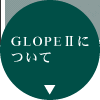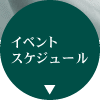予定表 -詳細情報-
| 件名 | LS 大薗博記氏 |
| 開始日時 | 2011年 6月 28日 (火曜日) 12時15分 (GMT+09:00) |
| 終了日時 | 2011年 6月 28日 (火曜日) 12時50分 (GMT+09:00) |
| 場所 | 1号館401教室 |
| 詳細 | GLOPE II Lunch Time Seminar 【報告者】:大薗博記氏(日本学術振興会特別研究員(PD)/早稲田大学経済学研究科) 【報告タイトル】:Cultural differences in the effects of smiling on judgments of trustworthiness 【日時】:6月28日(火)12:15〜12:50 【場所】:1号館401教室 *The talk will be given in English. 【概要】 How do people detect trustworthiness in others? Some researchers have shown that participants trust smiling faces more than non-smiling faces. I examined cultural differences in this “smile effect.” I investigated whether three elements of a smile (smile intensity at the eyes, smile intensity at the mouth, and facial symmetry) would differently influence American and Japanese participants’ judgments of trustworthiness. In our experiment, images of 54 American and 69 Japanese male faces were initially rated for intensity of expression in the eyes and mouth, and for symmetry of the smile, by Japanese participants. The images were then presented to 142 American and 80 Japanese participants, who were asked to rate each face’s trustworthiness. The results showed that Japanese participants rated as more trustworthy faces with greater upper-half intensity and greater smile symmetry, but rated as less trustworthy faces with greater lower-half intensity. In contrast, American participants rated as more trustworthy faces with greater lower-half intensity, but there was no influence of upper-half smile intensity, nor of smile symmetry. I will discuss why these cultural differences occurred. |
| カテゴリー | 政治経済学基礎セミナー・ランチタイムセミナー |








